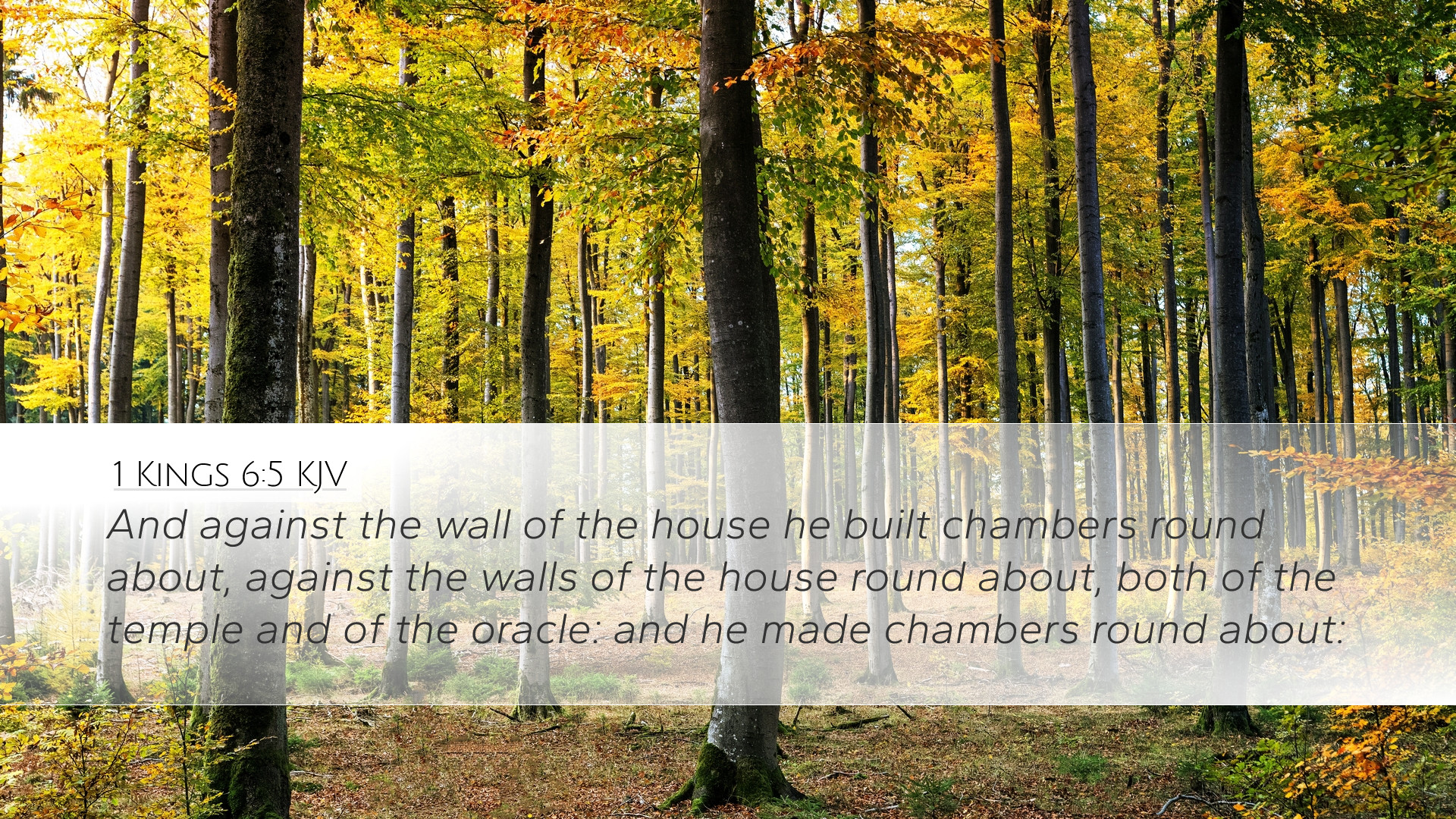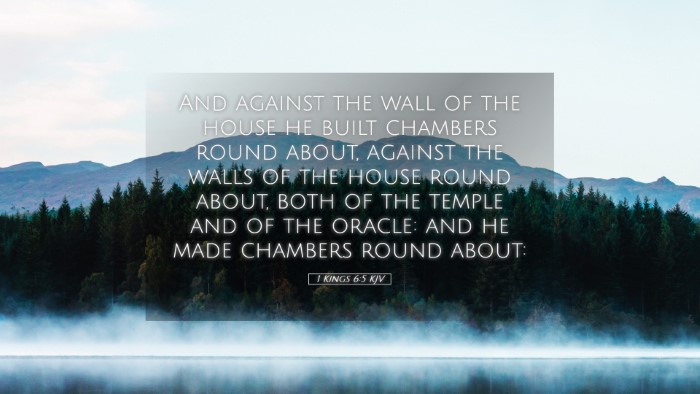Commentary on 1 Kings 6:5
Verse: "And against the wall of the house he built chambers round about, against the walls of the house round about, both of the temple and of the oracle: and he made chambers round about." (1 Kings 6:5, KJV)
Introduction
The construction of Solomon's temple is a pivotal moment in biblical history, reflecting both the glory of Israel's united kingdom and the divine presence of God among His people. In 1 Kings 6:5, we encounter an important aspect of the temple's architecture—its chambers—which reveals not just the grandeur of the structure but also the intricacies of its design, pivotal for understanding its religious and cultural significance.
Architectural Insights
Commentators like Matthew Henry emphasize the meticulous nature of Solomon’s work in the construction of the temple. The chambers built against the walls served multiple purposes, acting as storage areas, living quarters for priests, and places for the sacred items used in worship. Such architectural attention underscores the importance of holiness and order in worship.
Albert Barnes notes that the chambers provided not only functionality but also represented separation—a crucial concept in Israelite worship. The construction of these chambers illustrates the division between the holy and the common; areas where priests would reside and prepare themselves for service were distinct from the areas accessible to laypeople.
The Symbolism of Chambers
Adam Clarke suggests that the number and arrangement of these chambers have symbolic implications. The chambers could represent the various degrees of access to God, illustrating the layers of sanctity within the temple. Just as one ascends towards the most sacred parts of the temple, so too do believers approach God in levels of holiness and reverence.
Chamber Functions
- Storage of Sacred Objects: Chambers were designed for storing worship items, emphasizing the care taken for sacred artifacts.
- Living Quarters for Priests: These spaces facilitated the continuous worship and devotion of the priests, essential for maintaining the rituals of worship.
- Division of Holiness: By providing separate chambers, Solomon underscored the distinction between the common and sacred, highlighting God’s holiness.
Theological Implications
The chambers in this verse evoke a deeper understanding of God's dwelling among His people. Matthew Henry remarks that just as the physical chambers provided space for the priests, so God’s Spirit dwells within believers, who are now the temple of God. This connection brings forward the New Testament theology where believers are called to live in holiness, reflecting the sanctity of the temple.
Albert Barnes also notes the significance of divine presence, which was a central concern for the Israelites. The placement and arrangement of chambers can be seen as a precursor to the believer's call to create space in their hearts for God, a notion echoed in spiritual formation and pastoral theology.
Practical Applications
For pastors and theologians, the insights drawn from 1 Kings 6:5 underline the importance of creating a sacred space for spiritual growth. Just as the chambers served a purpose in ancient worship, church leaders are called to develop environments conducive to worship, study, and community.
- Creating Sacred Spaces: Churches and worship spaces should be designed to inspire reverence and facilitate the encounter with God.
- Equipping for Service: Training and preparing individuals for service in the church reflects the practice of preparing priests in the temple.
- Holiness in Daily Life: Encouraging congregants to recognize their bodies as temples of the Holy Spirit reinforces the message of sanctity and devotion.
Conclusion
The construction of the chambers in Solomon’s temple, as detailed in 1 Kings 6:5, serves as a multifaceted metaphor for the interactions between God, His people, and the practices of worship. Through the insights of historical commentaries, we see not only the elements of physical worship but also the implications for spiritual life today.
The careful organization and structure of these chambers reflect the heart of God’s desire for intimacy with His people, an invitation extended to all believers to draw near, live in holiness, and participate in the sacred task of worship.


